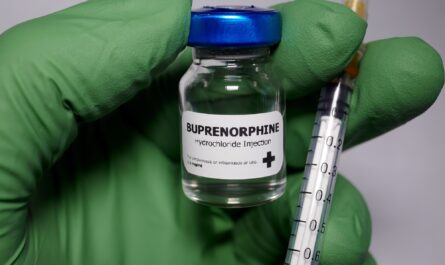
Causes of Menstrual Cramps
Menstrual cramps, also known as dysmenorrhea, are caused by an increase in prostaglandins released in the uterus during menstruation. Prostaglandins are hormone-like substances that play a role in menstruation and fertility. They cause the walls of the uterus to contract, which helps shed the uterine lining if pregnancy does not occur. For some women, the release of prostaglandins results in painful cramps.
There are two main types of menstrual cramps:
Primary dysmenorrhea refers to cramping that occurs in women without any underlying medical conditions. It is the most common cause of painful periods. The pain is usually felt in the lower abdomen and lower back and may radiate to the inner thighs.
Secondary dysmenorrhea is caused by an underlying condition such as endometriosis, fibroids, pelvic inflammatory disease or adenomyosis. The pain tends to be worse with secondary dysmenorrhea and may occur between periods as well as during menstruation.
Home Remedies for Cramp Relief
Luckily, there are some natural ways to help relieve menstrual cramps and find relief without medication. Here are some of the top home remedies:
Heating Pad – Applying gentle heat to the lower abdomen can help relax cramped muscles and increase blood flow. A heating pad on low or warm shower or bath water can provide soothing relief.
Massage – Gently massaging the lower back and abdomen using broad, circular motions can help relax tense muscles and increase circulation to painful areas.
Magnesium – Consuming foods high in magnesium like nuts, seeds and greens or taking a magnesium supplement can help reduce cramps by relaxing muscles. Magnesium helps counter the prostaglandins that cause cramping.
Omega-3 Fatty Acids – Eating foods rich in omega-3s like salmon, flaxseeds and walnuts or taking an omega-3 supplement may lessen cramps by decreasing inflammation. Look for combined EPA and DHA dosage of at least 300mg twice per day.
Vitamin B1 – Also called thiamine, vitamin B1 plays a role in energy production and muscle function. Deficiency has been linked to worsening of menstrual cramps. Make sure to consume thiamine-rich foods like legumes, whole grains, nuts and seeds.
Cinnamon – This warming spice contains compounds that provide anti-inflammatory and pain-relieving effects. Try sipping on cinnamon tea or adding a half teaspoon of ground cinnamon to warm water or milk.
Ginger – Ginger root has anti-inflammatory properties that may ease menstrual cramps. Grate fresh ginger over food, steep in hot water for tea or try ginger capsules or chews. Start with 500mg per day during PMS and menstruation.
Peppermint – The menthol in peppermint creates a cooling sensation in the body and may relieve muscle spasms associated with cramps. Drink peppermint tea or add a drop of peppermint essential oil to a carrier oil and massage it onto the lower abdomen.
Exercise – Any type of physical activity like yoga, walking, biking or swimming increases blood flow and releases endorphins to help relieve cramp pain. Just be sure not to overdo it when pain is severe. Gentle movement is ideal.
Rest – Getting plenty of rest during heavy menstrual bleeding and most severe cramping days allows the body to devote energy to the uterine shedding process. Aim for 8-9 hours of sleep per night when possible.
Dietary Changes for Cramp Relief
In addition to dietary supplements already mentioned, certain foods have been shown to either lessen or worsen menstrual cramps when consumed or avoided. Consider these diet adjustments:
– Increase intake of fresh fruits and vegetables high in magnesium, potassium and vitamin K to support muscle relaxation and blood flow. Dark leafy greens, citrus fruits and cruciferous veggies like broccoli fit the bill.
– Limit caffeine as it acts as a diuretic, increasing fluid loss and possibly exacerbating dehydration and associated menstrual discomfort. Opt for water or herbal tea instead of coffee or soda.
– Reduce salt intake close to your period as excess sodium can cause bloating and water retention. Go easy on processed foods high in hidden sodium.
– Eat smaller, more frequent meals to keep your blood sugar stable rather than three large meals per day. Low blood sugar contributes to PMS symptoms.
– Avoid sugar-packed foods as they spike insulin levels, potentially worsening mood and pain during menstruation. Opt for whole foods with natural sugars.
– Limit alcohol, which acts as a diuretic and muscle relaxant in large amounts and could intensify cramping symptoms and PMS mood changes.
Alternative Therapies for Cramp Relief
When home remedies alone don’t fully relieve menstrual cramp treatment, alternative therapies may provide additional relief. Always check with your healthcare provider before trying:
– Acupuncture – This traditional Chinese practice focuses on inserting thin needles into specific points on the body to unblock chi or energy flow and reduce pain. Studies show it may lessen menstrual cramp intensity.
– Massage therapy – Trigger point therapy, deep tissue massage or myofascial release on the lower abdominal muscles, lower back and hips can decrease muscle tension related to menstrual pain.
– Chiropractic adjustments – Gentle spinal and pelvic manipulation by a chiropractor may relieve nerve interference and improve blood flow to help relax cramped muscles in the pelvic region.
– Herbal supplements – Herbs like black cohosh, turmeric, ginger and cramp bark have long been used to decrease menstrual cramping when taken as supplements or teas. Talk to a herbalist for guidance on proper dosing.
– Biofeedback & relaxation techniques – Learning deep breathing, progressive muscle relaxation, guided imagery or meditation through biofeedback training provides natural cramps relief through stress reduction.
With consistency using natural remedies, diet adjustments and alternative therapies, most women find relief from menstrual cramps treatment without medication. But don’t hesitate to see your doctor if home remedies are not sufficiently improving pain that interferes with daily activities.



